
Global Dermathon
World Veterinary Dermatology Day 2026
Tuesday 3rd February 2026
To celebrate 'World Veterinary Dermatology Day 2026' the World Association for Veterinary Dermatology (WAVD) has teamed up with education specialists Elearning.Vet to bring you a learning experience like nothing before!

A Global Affair in Veterinary
Dermatology
A virtual event like nothing you've ever seen before!
The Global Dermathon is a collaboration between the World Association for Veterinary Dermatology (WAVD) and Elearning.Vet
Featuring some of the biggest names in veterinary dermatology from around the globe, this 24-hour continuous event aims to educate, inspire, engage and connect veterinary professionals from every continent – covering hot topics and everyday case presentations in a variety of formats.

2
Streams

5
Teaching Formats

6
Languages

24h
Continuous Education

45
Expert Speakers

100+
Countries Attending

7,000+
Expected Registrants

75K+
Global Audience
What to Expect
The Global Dermathon will cover major veterinary dermatology topics - from diagnostic skills, to treatment updates and everything in-between. Our experts will be covering dogs, cats, rabbits, birds, horses and cattle, as well as tackling big topics in our panel discussions and back-to-back format.
On top of the incredible education on offer, there will be valuable downloadable resources, freebies and competitions, opportunities to engage with other veterinary professionals and interact with the speakers.
Watch the video below to hear from the President of the World Association for Veterinary Dermatology, Dr Sue Paterson MA VetMB DVD Dip.ECVD FRCVS
What's On the Programme ?
Explore the full two-stream schedule of the Global Dermathon, featuring 38 expert-led talks, case discussions, and Q&A sessions. The schedule below gives you a complete view of topics, speakers, and timings so you can plan your learning across the global livestream.
Global Dermathon • Provisional Programme (GMT)
| Topic | Time (GMT) | Speaker(s) |
|---|---|---|
| STREAM ONE • English Language, Small Animal | ||
| Multimodal Approach to Atopic Dermatitis | 10:00 – 10:45 | Thierry Olivry |
| Emerging Zoonotic Diseases | 11:00 – 11:45 | Theo Knight-Jones & Lian Thomas |
| Malassezia Dermatitis in Dogs & Cats | 12:15 – 13:00 | Ross Bond |
| Non-inflammatory Canine Alopecia | 13:15 – 14:00 | Manon Paradis |
| Topical Therapy Panel Discussion | 14:30 – 15:30 | Tim Nuttall, Koji Nishifuji, Neelam Singh Josan |
| Feline Pemphigus Foliaceus | 15:45 – 16:30 | Petra Bizikova |
| Feline Viral Skin Diseases | 17:00 – 17:45 | Elizabeth Layne |
| Ectoparasites & the Environment | 18:00 – 18:45 | Ian Wright, Jane Sykes |
| Small Animal Interactive Quiz | 19:30 – 20:15 | Sue Paterson |
| Canine Pyoderma Management Updates | 20:30 – 21:15 | Katarina Varjonen |
| Skin Lumps and Bumps: Are They Always Cancerous? | 21:45 – 22:30 | Mona Boord |
| Use of Monoclonal Antibodies in Veterinary Dermatology | 22:45 – 23:30 | Valerie Fadok |
| AMR & One Health Panel Discussion | 00:00 – 01:00 | Mike Lappin, Victoria South, Darren Trott |
| Glucocorticoids: Use and Abuse in Practice | 01:30 – 02:15 | Craig Griffin |
| Small Animal Interactive Quiz | 02:30 – 03:15 | Millie Rosales |
| Pododermatitis | 04:00 – 04:45 | Peter Hill |
| The Exposome's Impact on Canine Atopic Dermatitis | 05:00 – 05:45 | Rosanna Marsella |
| Food Allergy Myths & Misconceptions | 06:30 – 07:15 | Galia Sheinberg, Cecilia Villaverde |
| Hair Follicle Anatomy and Hair Cycle | 07:30 – 08:15 | Dominique Wiener |
| Future of Veterinary Dermatology Panel Discussion | 09:00 – 10:00 | TBC |
| STREAM TWO • International Languages, Large Animal & Exotics | ||
| (JPN) Approach to the Pruritic Dog | 10:00 – 10:45 | Chie Tamamoto |
| (JPN) Updated Guidelines for Management of Canine Pyoderma | 11:00 – 11:45 | Koji Nishifuji |
| (CHN) Stubborn Otitis: When Standard Therapy Isn’t Enough | 12:00 – 12:45 | Chi-Yen Wu |
| (CHN) TBC | 13:00 – 13:30 | TBC |
| (ENG) Skin Disease in Cattle | 14:00 – 14:45 | Aiden Foster |
| (ENG) Dermatophilosis in Large Animals | 15:00 – 15:45 | Stephen White |
| (ENG) Culicoides Hypersensitivity - What’s New? | 16:00 – 16:45 | Ralf Mueller |
| (ENG) Equine Sarcoids | 17:00 – 17:45 | Anthony Yu |
| (FRA) Feline Allergies | 18:15 – 19:00 | Charline Pressanti |
| (FRA) Management of Otitis Externa | 19:15 – 20:00 | Marie-Christine Cardigues |
| (ESP) Cutaneous Signs of Internal Disease | 20:15 – 21:00 | Guille Manigot |
| (ESP) Updates on Leishmaniosis | 21:15 – 22:00 | Luis Ferrer |
| (POR) Esporotricosis Infections in Companion Animals | 22:15 – 23:00 | Flavia Clare |
| (POR) Cholesteatoma (tympanokeratoma) in Dogs | 23:15 – 00:00 | Ronaldo Lucas |
| (ESP) Clinical Approach to the Pruritic Dog | 00:15 – 01:00 | Ramon Almela |
| (ESP) Dermatoscopy and its Clinical Applications | 02:00 – 02:45 | Alberto Martin Cordero |
| (ENG) Common Skin Diseases of Rabbits | 03:00 – 03:45 | Izidora Sladakovic |
| (ENG) Feather Loss in Birds | 04:30 – 05:15 | Melinda Cowan |
Featured Speakers
Below is just a small selection of featured speakers you can look forward to learning from at the Global Dermathon!

Sue Paterson
MA VetMB DVD DipECVD FRCVS

Sue Paterson qualified from Cambridge in 1984. After a time in mixed practice in Devon she took her Certificate then British and European Diplomas in Veterinary Dermatology and has been an RCVS and European Specialist for more than 20 years. She has recently been elected as a Fellow of the RCVS for meritorious contributions to clinical practice.
She is the Veterinary Director of Veterinary Dermatological Ltd and Virtual Vet Derms, a veterinary telemedicine company.
She has published seven text books as well as writing numerous peer reviewed articles and contributing chapters to both small animal and equine text books. She lectures extensively globally and has delivered lectures in more than 60 countries.
Sue is a Past President of the British Small Animal Veterinary Association and also the European Society of Veterinary Dermatology. She is currently the President of the World Association for Veterinary Dermatology, Chair of Trustees at the Animal Charity Pharmacy and a trustee of Battersea Dogs and Cats Home.
Sue keen long-distance walker, and enjoys getting out onto the Cumbrian fells where she lives with her husband and dogs.
Small Animal Interactive Quiz
The talk summary and learning objectives, for this session will be published in the coming weeks. Please check back soon.
- Key clinical takeaways
- Diagnostics & decision-making
- Treatment strategies
- Practical pitfalls & tips

Tim Nuttall
BVSc BSc CertVD CBiol MIBiol PhD MRCVS

Dr Tim Nuttall graduated from the University of Bristol in 1992 and originally joined the Dick Vet in 1995 to train in dermatology and study for a PhD on canine atopic dermatitis. He joined the University of Liverpool in 2001, developing a dermatology clinic that now sees over 1000 cases each year. In August 2013 he returned to the Dick Vet as Head of Dermatology. The clinic sees a wide range of skin problems in dogs, cats, exotic species, horses and farm animals. Facilities and expertise include CO2 and Ho:YAG lasers, video-otoscopy, allergy testing and allergen specific immunotherapy, and managing antimicrobial resistant infections.
Tim has written over 100 clinical and scientific publications, co-authored A Colour Handbook of Skin Diseases of the Dog and Cat, and presented over 150 lectures throughout the world. In addition, Tim has served on RCVS, BSAVA, ESVD and DEFRA scientific committees, the International Committee on Atopic Diseases in Animals, is a scientific advisor to the Bella Moss Foundation and is on the editorial board of Veterinary Dermatology. He has served on the Controlling Antimicrobial Resistance in Scotland (CARS) Steering Group and is a member of the Scottish Veterinary Antimicrobial Prescribing Group and Scottish Veterinary Antimicrobial Resistance Group. He also had an active research programme, studying antimicrobial resistance, skin infections and the genetics of canine atopic dermatitis. In 2014 he received the BSAVA Woodrow Award for outstanding contributions to veterinary medicine.
Panel Discussion | Topical Therapy
The talk summary and learning objectives, for this session will be published in the coming weeks. Please check back soon.
- Key clinical takeaways
- Diagnostics & decision-making
- Treatment strategies
- Practical pitfalls & tips

Galia Sheinberg
MVZ, ESP, DLACVD

Dr. Galia Sheinberg is a Board certified small animal veterinarian specializing in dermatology, working as a full-time clinician in Mexico City. She is head and co-owner of the dermatology department in Centro Veterinario Mexico, a referral veterinary specialty hospital and now works in the dermatology specialty clinic. She is a graduate of Universidad Nacional Autonoma de Mexico, where she completed her Veterinary degree and her small animal medicine specialty. Dr. Sheinberg is a Diplomate of the Latin American College of Veterinary Dermatology (DLACVD) and a board member of the Latin American College of Veterinary Dermatology. Dr. Sheinberg is a well-known speaker and a clinical instructor of veterinary dermatology in Mexico and internationally. She is part of the Mexican Veterinary Dermatology Group, dedicated to clinical research and publications.
Food Allergy Myths & Misconceptions
The talk summary and learning objectives, for this session will be published in the coming weeks. Please check back soon.
- Key clinical takeaways
- Diagnostics & decision-making
- Treatment strategies
- Practical pitfalls & tips

Ross Bond
BVMS PhD DVD DipECVD FHEA MRCVS

Ross Bond graduated from Glasgow Veterinary School in 1985, spent 5 years in farm and small animal practice, and then joined the Royal Veterinary College in 1990, where he is currently Professor of Veterinary Dermatology. His research work into Malassezia yeast infections in dogs led to an award of a PhD in 1996. Ross holds RCVS and European College Diplomas in Veterinary Dermatology and is recognised as a specialist in veterinary dermatology by the RCVS. His research interests relate primarily to microbial skin infections in dogs and cats.
Malassezia Dermatitis in Dogs & Cats
This webinar examines Malassezia as both a commensal and opportunistic pathogen in dogs and cats. It will cover the yeast’s biology, clinical signs, diagnostic approaches, treatment strategies, emerging resistance, and the importance of managing concurrent conditions to achieve lasting control
- A basic knowledge of the biology of the genus Malassezia.
- Understanding of the processes that favour transition from commensal to pathogen
- Recognise and diagnose the disease.
- Awareness of treatment options and methods for prevention.

Dr. Chi-Yen Wu
DVM, MS, DACVD

Dr. Chi-Yen Wu is a Taiwanese veterinarian who earned his DVM degree from the National Taiwan University School of Veterinary Medicine, where he also completed a rotating internship. He then pursued a dermatology internship, residency, and master’s degree at Louisiana State University before becoming a board-certified dermatologist and clinical assistant professor at the University of Florida. His professional interests include otitis, topical therapy, carbon dioxide laser applications, and veterinary education.
Stubborn Otitis: When Standard Therapy Isn't Enough
Otitis remains one of the most challenging problems in veterinary dermatology. Although standard therapy can provide temporary relief, treatment failure and relapse are frequent when the underlying problems are not fully addressed. This session will examine why standard treatments often fall short, emphasizing the need to identify and manage primary, secondary, predisposing, and perpetuating factors. The lecture will also highlight recent insights in otitis management, including emerging therapeutic strategies. By understanding both the drivers of therapeutic failure and the evolving treatment concepts, clinicians may further improve patient outcomes.
- Recognize why otitis managements fail by addressing primary, secondary, predisposing, and perpetuating factors.
- Apply a stepwise approach to refractory otitis when standard therapies are insufficient.
- Incorporate emerging strategies and evolving treatment concepts into clinical practice.

Manon Paradis
DVM, MVSc, DACVD
Dr. Paradis holds a doctorate in veterinary medicine and an internship in small animals from the Faculty of Veterinary Medicine (FMV) of the University of Montreal (UdeM), as well as a residency in small animal internal medicine and a master's degree in reproductive endocrinology from the Western college of Veterinary Medicine of the University of Saskatchewan. This was followed by a residency in veterinary dermatology (UdeM and Cornell U). She became diplomate of the American College of Veterinary Dermatology in 1990.
She worked as a professor in dermatology in the Department of Clinical Sciences of the FMV at UdeM for more than 30 years. During her career, she has published more than 160 peer-reviewed scientific articles and book chapters, around 30 abstracts and delivered more than 400 scientific conferences in more than 25 countries.
This long and rewarding career, during which she received numerous awards and honors, earned her the prestigious status of professor emeritus in 2019.
Non-inflammatory (canine) Alopecia
The talk summary and learning objectives for this session will be published soon.

Lluís Ferrer
DVM, MSc, PhD, DipECVD

Lluís Ferrer obtained a degree in Veterinary Medicine (1981) and a PhD in Veterinary Medicine (1985) at the University of Zaragoza - Spain and a Master's degree in Animal Pathology (1983) at the Veterinary School of Hannover (Germany). He is a Diplomate of the European College of Veterinary Dermatology since 1994 and since 1985 he has been Professor of Pathology and Dermatology at the Veterinary Faculty of the Universitat Autònoma de Barcelona (Barcelona, Spain), where he has also been Dean of the Veterinary Faculty (1992-1998), Vice-Rector of Research (1998-2002) and Rector of the Universitat Autònoma de Barcelona (2002-2009).
Between 2012 and 2018 he was Professor of Dermatology at the School of Veterinary Medicine, Tufts University, Boston, MA (USA). He has been a visiting professor at the Universities of Montreal (Canada), Lisbon (Portugal) and Utrecht (The Netherlands). Among other topics, his research has focused on skin infections (canine leishmaniasis, demodicosis, staphylococcal pyoderma), canine atopic dermatitis, canine perianal furunculosis and the genetic basis of skin diseases.
Canine leishmaniosis: key points to manage a complex disease
A concise overview of what delegates will learn in this session and how it applies in practice.
- Key clinical takeaways
- Diagnostics & decision-making
- Treatment strategies
- Practical pitfalls & tips

Millie Rosales
DVM, DACVD

Dr. Millie Rosales earned her Bachelor’s degree in Biology from Florida International University before going on to receive her Doctor of Veterinary Medicine degree from the University of Florida, College of Veterinary Medicine, in 2000. After graduating, she worked as a general practitioner at a non-profit small animal clinic in Miami. In 2003, Dr. Rosales returned to the University of Florida to complete a two-year residency in veterinary dermatology, later becoming a Diplomate of the American College of Veterinary Dermatology (ACVD).
Dr. Rosales has held leadership positions in local professional organizations, including serving as the past president of the South Florida Veterinary Medical Association (SFVMA) and currently being a member of its executive board. She also served as a board member of the Miami Veterinary Foundation from 2008 to 2014.
Outside of her dermatology practice, Dr. Rosales is deeply passionate about supporting shelter and rescue animals. She actively advocates for local shelter and rescue organizations, promotes spaying/neutering, and emphasizes the importance of pet adoption. A native of Miami, Dr. Rosales is fluent in both English and Spanish, allowing her to serve the diverse community of South Florida.
Small Animal Interactive Quiz
“Ear It Is! A Quiz-Based Journey Through Pinna Disorders in Dogs and Cats”
- Interactive Learning
- Pinna Disorders
- and more
Registration Options
Choose between a free ticket to attend live, or a VIP ticket to have access to the recordings (and bonus content!) post-event.
Standard VIP Tickets
£99
From 25th December 2025
AVAILABLE 25th DEC 2025Limited Early Bird VIP Tickets
Standard VIP Tickets Available from 25th November 2025
Limited Early Bird VIP Tickets
Standard VIP Tickets Available from 25th November 2025
International Payments
For international currencies, click the button below:
(AUD, BRL, CAD, CHF, EUR, INR, JPY, MXN, SEK, TRY, USD, ZAR)
Explore International CurrenciesMeet Our 2026 Speakers
Our speakers include internationally recognised specialists who bring years of clinical experience, research, and teaching. Explore their profiles to see the expertise behind each session.

Aiden Foster
PhD
Aiden Foster is a Honorary member of the European Society of Veterinary Dermatology and an emeritus member of the American College of Veterinary Dermatology. He has substantial experience of publishing including editing journals and books; including the journal Veterinary Dermatology. His most recent book is Deer Veterinary Medicine. He has worked in livestock disease surveillance in the UK, with a particular focus on skin disease.
Selected Skin Diseases In The Cattle
Learning Objectives:
- Be able to explain the importance of history when investigating skin disease in cattle
- Be able to identify common ectoparasites found on cattle.
- Be able to describe the diagnostic steps for investigating cattle with signs of alopecia
- Be able to describe the diagnostic steps for investigating cattle with nodular skin lesions
- Be able to describe the lesions associated with udder cleft dermatitis

Alberto Martin Cordero
DVM, Member AAVD, Founder LASVD
Dr. Alberto Martin Cordero received the degree of Doctor in Veterinary Medicine by the University of Guadalajara. He studied Veterinary Dermatology in the European School for Advanced Veterinary Studies, University of Luxembourg. He is a member of the American Academy of Veterinary Dermatology and a founder member of the Latin American Society of Veterinary Dermatology. Is an assistant professor in University of Guadalajara, Department of Veterinary Medicine. He has been a speaker in numerous conferences in Mexico, Latin America and Eastern Europe; and presented articles and clinical cases in Latin America, USA, and Europe. He has been a coordinator in videotoscopy wetlabs and dermatology workshops. He is the coordinator of the dermatology program in Leon Conference (CVDL), currently the second largest veterinary meeting in the world. Dr. Alberto has published articles and clinical cases national and international. He works in private practice and it is the owner of VETDERM: the first veterinary dermatology referral practice the west of Mexico. He has realized visits in the Animal Dermatology Clinics in Southern California and in the Ludwig Maximilian University in Munich and Colorado State University.
Dermatoscopy and its clinical applications
Learning Objectives: coming soon

Anthony Yu
BSc, DVM, MSc, DACVD
Dr. Tony Yu graduated from the Ontario Veterinary College in 1990 and went on to complete a residency and Master’s degree at Auburn University in 1995. He became a Board-Certified Veterinary Dermatologist with the American College of Veterinary Dermatology in 1996.
After 11 years in private practice in Portland, Oregon, Dr. Yu returned to Ontario as an Associate Professor at OVC, where he taught and mentored veterinary students in dermatology for nine years.
Since 2013, he has been in private referral practice, dedicated to helping patients with chronic ear, skin, endocrine, and allergic conditions in dogs, cats, and horses. Dr. Yu also has a keen interest in video-otoscopy and LASER surgery and is committed to providing thorough, compassionate care to every patient he sees.
.
Equine Sarcoids
Learning objectives: coming soon

Cecilia Villaverde
BVSc, PhD, Diplomate ACVIM (Nutrition)
Cecilia Villaverde obtained her veterinary degree in 2000 and her PhD in animal nutrition in 2005 by the Universitat Autònoma de Barcelona (UAB), Spain. She completed a residency in small animal clinical nutrition at the Veterinary Medical Teaching Hospital at UC Davis, California and is board certified in veterinary nutrition by the American College of Veterinary Internal Medicine (Nutrition) and by the European College of Veterinary and Comparative Nutrition (ECVCN) since 2010. After working as the chief of service of the veterinary teaching hospital nutrition service in UAB for 6 years, she is now a consultant in clinical nutrition for Expert Pet Nutrition (www.expertpetnutrition.com) and Veterinary Information Network (VIN). She was a member of the WSAVA Global Nutrition Committee for 10 years and has written several articles and book chapters on the topic of companion animal nutrition.
Food Myths and Misconceptions (B2B)
Learning Objectives:
- Identify the limitations of different available diagnostic tests for food allergy
- Compare different dietary strategies used in elimination diets
- Be able to choose a diet for an elimination and challenge trial
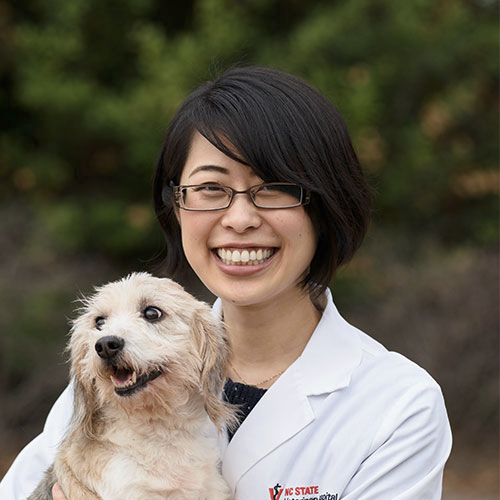
Chie Tamamoto-Mochizuki
DVM, PhD, dipAiCVD
Dr. Chie Tamamoto-Mochizuki is a board-certified veterinary dermatologist with a diverse background in both clinical practice and research. She earned her DVM from Obihiro University of Agriculture and Veterinary Medicine in Japan in 2007, followed by a four-year residency in Small Animal Internal Medicine at the University of Tokyo. Dr. Tamamoto-Mochizuki then pursued advanced training as an alternative route resident in Veterinary Dermatology at North Carolina State University (NCSU) from 2013 to 2017, achieving board certification from the Asian College of Veterinary Dermatology (AiCVD) in 2018. In 2021, she completed her Ph.D. at NCSU, focusing on Dermatology and Immunology.
Currently, Dr. Tamamoto-Mochizuki serves as an Assistant Professor of Dermatology at the University of Tennessee College of Veterinary Medicine, where her research explores the role of IL-31 in the pathogenesis of atopic dermatitis and itch signaling in companion animals. She is also an active committee member of the International Committee on Allergic Diseases of Animals and AiCVD, and is dedicated to advancing global education in Veterinary Dermatology.
Approach to the pruritic dog (in Japanese)
Learning Objectives:
- Explain the mechanisms that cause pruritus.
- Describe the basic clinical approach to pruritic diseases.
- Apply learned concepts to real canine cases.

Chi-Yen Wu
DVM, MS, DACVD
Dr. Wu is a Taiwanese veterinarian who earned his DVM degree from the National Taiwan University School of Veterinary Medicine, where he also completed a rotating internship. He then pursued a dermatology internship, residency, and master’s degree at Louisiana State University before becoming a board-certified dermatologist and clinical assistant professor at the University of Florida. His professional interests include otitis, topical therapy, carbon dioxide laser applications, and veterinary education.
Stubborn Otitis: When Standard Therapy Isn’t Enough (CHN)
Learning Objectives:
- Recognize why otitis managements fail by addressing primary, secondary, predisposing, and perpetuating factors.
- Apply a stepwise approach to refractory otitis when standard therapies are insufficient.
- Incorporate emerging strategies and evolving treatment concepts into clinical practice.

Craig Griffin
DVM
Dr. Griffin is a graduate of Cornell University and completed his residency at UC Davis in 1980. Dr. Griffin is a diplomate of the American College of Veterinary Dermatology (ACVD), has served on the Board of Directors and examination committee for the ACVD and was the President of the ACVD in 1999/2000. He also served as president of the American Academy of Veterinary Dermatology and of the Western States Veterinary Conference. Dr. Griffin is the founder and co-owner of the Animal Dermatology Clinic.
Dr. Griffin is a frequent lecturer and clinical instructor of veterinary dermatology in this country and abroad. He has published many articles and books on small animal skin disease, including co-author of Muller and Kirks Small Animal Dermatology 5th and 6th editions and co editor of Current Veterinary Dermatology, The Science and Art of Therapy. Dr. Griffin received the ACVD Award for Excellence for outstanding contributions in veterinary dermatology in 2001.
Glucocorticoids: Use and Abuse in Practice
Learning objectives: coming soon
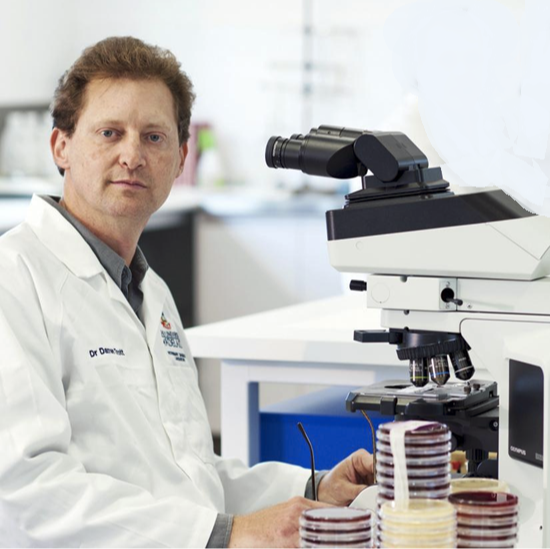
Darren Trott
BSc (Hon), BVMS (Hon), PhD
I completed my veterinary degree at Murdoch University and worked in small animal practice for eight years. Following an honours project on Listeria monocytogenes I became interested in the ecology of infectious diseases and completed a PhD with Prof David Hampson on intestinal spirochaetes (awarded in 1998). After completing a three year post-doc at the National Animal Disease Center in Ames, Iowa, USA, I accepted a lectureship at The University of Queensland (UQ) School of Veterinary Science in 2000. I taught veterinary microbiology and antimicrobial chemotherapy to veterinary undergraduates at UQ for 10 years and conducted research on gastrointestinal diseases, microbial ecology and virulence/antimicrobial resistance in companion animal, livestock and human bacterial pathogens. I joined The University of Adelaide School of Animal and Veterinary Sciences in January 2010 and my research areas have expanded to also include antimicrobial resistance ecology and repurposing/redesigning existing drug classes for development as new anti-infectives, including pre-clinical assessment in murine bioluminescent models of infection.I am the Director of the Australian Centre for Antimicrobial Resistance Ecology, a One Health orientated Research Centre focused on mitigating the development of antimicrobial resistance in humans, animals and the environment whilst also developing novel solutions for the future. I am also Deputy DIrector of the ARC Industrial Transformation Training Centre for Environmental and Agricultural Solutions to Antimicrobial Resistance (CEA-StAR) based in the Centre for Superbug solutions at The University of Queensland (https://ceastar.org.au/).I work closely with Australia's major animal industries (both livestock and companion animal) in the areas of prudent antimicrobial use, antimicrobial stewardship and confirming/ensuring that rates of resistance in animal pathogens, zoonotic and commensal bacteria remain low by international standards.
AMR & One Health Panel Discussion
The summary, learning objectives, and speaker insights for this session will be published here once available. Please check back soon.
- Key clinical takeaways
- Diagnostics & decision-making
- Treatment strategies
- Practical pitfalls & tips

Dominique Wiener
DVM, PhD, Dipl ECVP
Dr. Dominique Wiener earned her DVM, from the Vetsuisse Faculty, University of Bern, Switzerland. She then completed a combined PhD/residency program at the Vetsuisse Faculty, University of Bern and became a diplomate of ECVP. During the residency, she became interested in dermatopathology. In 2018 joined Texas A&M University (TAMU), College Station, USA as a clinical assistant professor in anatomic pathology and was appointed clinical associate professor in 2023.
She was teaching the professional students and residents at TAMU and did research focused on canine and feline keratinocytic organoids. She was the director of the dermatopathology specialty service at TAMU until she returned to Switzerland in May 2025. Since June 2025 she is working as an anatomic pathologist with focus on dermatopathology at Kühn Pathologie, Hünenberg, Zug, and at Vetscope, Riehen, Basel. She is president of the International Society of Veterinary Dermatopathology. She serves as a manuscript reviewer in the areas of dermatopathology. Off-work she likes to enjoy time with her family, friends and her dog Patch.
Hair follicle anatomy and hair cycle
Learning objectives:
- To learn about the hallmarks of the different hair follicle portions
- To recognize the different hair cycle phases
- To know the most common causes of hair cycle arrest

Elizabeth Layne
DVM, Diplomate ACVD
Dr. Layne graduated from Colorado State University College of Veterinary Medicine in 2002. She worked for 11 years in mixed animal and small animal private practice. She then underwent dermatology specialty training as an intern and then resident at the University of Wisconsin-Madison School of Veterinary Medicine. She stayed at the UW-Madison for two more years as a clinical instructor, and then moved to Salt Lake City, Utah, where she works for BluePearl Veterinary Specialists. She also works as a locums for Unleashed Veterinary Dermatology in Connecticut, and provides dermatology consultation services in Montana. She is a co-editor for Veterinary Dermatology and Clinical Case Reports and is chair of the ACVD Research and Grants Committee.
Feline Viral Skin Diseases
Learning objectives:
- Attendees will recognize the clinical presentations and how to differentiate the various causes of facial lesions in feline dermatology.
- Attendees will learn about various diagnostic tests (cytology, biopsy, PCR, IHC) needed to diagnose viral skin diseases in cats.
- Attendees will learn about treatment options for viral skin diseases in cats with recognition of the various global availability of antiviral medication.

Eve Hanks
BVM&S CertAVP (EM) PhD MRCVS
Dr Eve Hanks is the CEO & Founder of MI:RNA. Eve is a veterinary surgeon who graduated from the University of Edinburgh in 2011. She has over 14 years of experience working in veterinary care, including a mixture of production animal, equine, small animal, and emergency care. Eve has always been a passionate lifelong learner and completed an advanced veterinary practitioner certificate in medicine with the University of Liverpool, and later a PhD in Immunology with the University of Glasgow.
She then took this expertise and began working as a clinical pathologist for Scotland’s Rural College (SRUC) leading the farm animal and supporting the companion animal diagnostics and public health work. During this time, Eve began to increase her awareness of a need for a seismic shift in diagnostic work and decided to take the leap as an entrepreneur to harness the power of microRNAs as biomarkers of disease. Eve's novel concept was to pair this cutting-edge diagnostic with advanced modelling to contribute to the precision medicine drive to create an impactful and practical solution for vets in clinic and on farm.
As a solo female founder, and the first company ever to spin out from SRUC, Eve then grew the business from the ground up, securing investment, sourcing grant funding, attracting strategic partnerships, onboarding a leading group of academic collaborators and now proudly leads a gender-balanced team of global experts with entrepreneurial mindsets. Eve is passionate about diversity in STEM and dedicates time and effort to mentoring and developing her team and other entrepreneurs in the field.
Her mission is to improve animal health and welfare, helping pets live longer and healthier lives, whilst supporting the agricultural sector in the journey to sustainable and ethical farming.
The Future of Veterinary Dermatology Panel Discussion
Learning objectives: coming soon

Flavia Clare
DVM MSc PhD
Dr. Flávia Clare, DVM, MSc, PhD, is a veterinary dermatologist with over 24 years’ experience. She holds a Doctorate in Veterinary Medicine with an emphasis in dermatology from UFRRJ and is a member of ESVD, AAVD, SLDV, and SBDV. She teaches small animal medicine, physiology, immunology and allergy at UNIFAA and leads postgraduate courses in dermatology. She maintains a clinical practice, lectures nationally, and runs her own dermatology company offering both in-person and online courses.
(POR) Esporotricosis Infections in Companion Animals: Clinical and One Health Perspectives
Learning objectives:
- Recognize the global epidemiological scenario of sporotrichosis, with emphasis on hyperendemic regions and emerging cases worldwide.
- Identify the main clinical presentations of feline and canine sporotrichosis and their zoonotic implications.
- Understand diagnostic approaches, including cytology, culture, histopathology, and molecular methods.
- Evaluate therapeutic options and challenges, particularly antifungal resistance and treatment failures.
- Apply a One Health perspective to sporotrichosis, highlighting its impact on public health and the importance of surveillance and interprofessional collaboration.

Galia Sheinberg
DVM, ESP, DLACVD
Dr. Galia Sheinberg is a renowned specialist in veterinary dermatology with a strong academic background and an outstanding international career. A graduate of the National Autonomous University of Mexico (UNAM), where she also specialized in Medicine and Surgery, she has built her career around the study and treatment of dermatological diseases.
She is a Diplomate of the Latin American College of Veterinary Dermatology (DLACVD), an organization in which she also served on the board of directors, and has played a key role in the development and promotion of this specialty in Latin America. Dr. Sheinberg is a board member of the Purina Global Institute and is part of the Global Nutrition Committee of WSAVA (World Small Animal Veterinary Association), where she contributes to setting guidelines in nutrition and dermatological health worldwide. She is also a member of the administrative board of the World Association of Veterinary Dermatology (WAVD).
She serves as the director of Specialized Dermatology at the Mexico Veterinary Center in Mexico City, one of the country’s leading clinics. She has published research in indexed scientific journals and has presented at veterinary dermatology congresses and international forums, sharing her clinical and scientific expertise with professionals from around the world.
Food Allergy Myths and Misconceptions
Learning Objectives:
- Identify the limitations of different available diagnostic tests for food allergy
- Compare different dietary strategies used in elimination diets
- Be able to choose a diet for an elimination and challenge trial
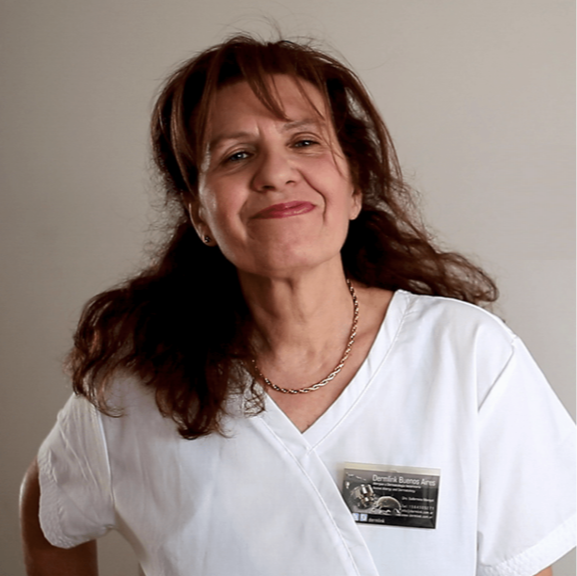
Guillermina Manigot
DVM Esp.
Dr. Guillermina Manigot is a veterinary doctor based in Buenos Aires, Argentina, with over 30 years of experience in small animal dermatology through her private service, Dermlink Buenos Aires (founded in 1994). She holds a specialist diploma in Dermatology from the Professional Council of Veterinary Doctors of Argentina (CPMV)..
A graduate of the University of Buenos Aires (UBA), Dr. Manigot actively contributes to veterinary education through roles with WAVD and has supported the development of professional associations in Argentina and Latin America, and contributes actively through committee working in many of those, like WSAVA and WAVD.
She is a frequent speaker at international conferences and a published author in the field. Her scientific contributions include the publication of peer-reviewed articles, posters, and co-authorship of specialized veterinary books, further solidifying her role as a thought leader in veterinary dermatology in the region.
Solar & Actinic Dermatitis in Dogs
Learning objectives: coming soon

Ian Wright
BVMS BSc MSc MRCVS
Ian Wright is a practising Veterinary surgeon and co-owner of the Mount Veterinary Practice in Fleetwood. He has a master’s degree in veterinary Parasitology and is chair of the European Scientific Counsel of Companion Animal Parasites (ESCCAP). Ian has over 130 published peer reviewed articles and papers and is an editorial board member for the Companion animal journal. He continues to carry out research in practice including work on intestinal nematodes and ticks..
Ectoparasites & the Environment (B2B)
Learning objectives: coming soon

Izidora Sladakovic
BVSc (Hons I), MVS, DACZM - Board-certified specialist (ZCA), FFCP
Dr Izidora graduated from the University of Sydney in 2007 with a Bachelor of Veterinary Science (First Class Honours). After working in both exotics and general practices for several years, Izi completed a rotating internship at the Small Animal Specialist Hospital (SASH) in Sydney and then joined Sydney Exotics and Rabbit Vets as an associate. She also obtained a Master of Veterinary Studies from Murdoch University.
In 2017, Izi completed a three-year zoological medicine residency, with a focus on exotic pets, at the University of Georgia, USA. She became a Diplomate of the American College of Zoological Medicine in 2017, passing the sub-specialty examination in zoological companion animals (ie. exotic pets). Izi is currently the only veterinarian in Australia to hold a qualification, and is a registered specialist in both Australia and USA. Izi is the owner and director of AVES, and is a Fear Free Certified® Professional.
Izi has published numerous journal articles and book chapters, undertaken research projects on diagnostic techniques in exotic pets, presented at various exotics conferences, and regularly contributes to the continuing education of vets and vet nurses. She was also integral in the development of an antibiotic policy for exotics.
Izi volunteers with the Sydney Wildlife Mobile Care Unit, providing veterinary care to injured and orphaned native wildlife.
Common Skin Diseases of Rabbits
Learning objectives: coming soon

Jane Sykes
BVSc (Hons), PhD, MBA, Dipl.ACVIM(SAIM)
Dr. Sykes is a professor of small animal medicine and Chief Veterinary Medical Officer at the University of California, Davis, School of Veterinary Medicine, with a special interest in small animal infectious diseases. She obtained her veterinary degree and PhD in veterinary microbiology at the University of Melbourne in Australia and completed her residency at the University of Minnesota. She is a Diplomate of ACVIM. She is widely published in peer-reviewed journals and is the editor of the textbook Canine and Feline Infectious Diseases.
Ectoparasites & the Environment (B2B)
Learning objectives: coming soon

Katarina Varjonen
DVM, Dipl ECVD, MRCVS
Dr Katarina Varjonen is a board-certified veterinary dermatologist. She works at the Anicura Albano Animal Hospital in Stockholm, Sweden. Previously, she was a senior lecturer in Dermatology at the University of Liverpool, School of Veterinary Science, the United Kingdom. She is also the President of the European Society of Veterinary Dermatology (ESVD) and a member of the administrative committee at the World Association for Veterinary Dermatology (WAVD).
She became a Diplomate of the European College of Veterinary Dermatology in 2011. She has numerous publications under her belt. Her main interests are small animal dermatology in particular treatment of bacterial infections and antimicrobial stewardship, ear diseases and surgical laser application in dermatology
Canine pyoderma management updates
Learning objectives: coming soon

Koji Nishifuji
DVM, PhD, DipAiCVD
Dr. Koji Nishifuji earned a PhD from the United Graduate School of Veterinary Sciences, Gifu University in 2001, and subsequently became a postdoctoral research fellow in the Department of Dermatology at Keio University School of Medicine. From 2007 to 2009, he served as a Senior Assistant Professor in the Division of Animal Life Science at Tokyo University of Agriculture and Technology. He was appointed Associate Professor at the same institution from 2009 to 2020, and is currently a Professor at the same institution. He is a Diplomate of the Asian College of Veterinary Dermatology, the current President of the Japanese Society of Veterinary Dermatology, and a member of the Administrative Committee of the World Association for Veterinary Dermatology.
(JPN) Updated guidelines for management of canine pyoderma
Learning objectives:
- Learning about the importance of cytology in diagnosing pyoderma.
- Learning about the usefulness of topical therapy in management of pyoderma.
- Learning about the importance of bacterial culture and antimicrobial susceptibility testing for the choice of antimicrobials.
- Learning about durations of systemic therapy for canine superficial/deep pyoderma.
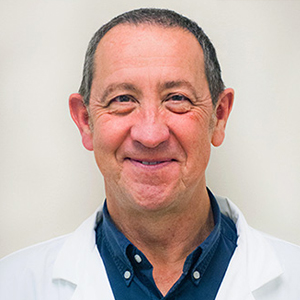
Lluís Ferrer
DVM, MSc, PhD, Dip ECVD
Lluís Ferrer obtained a degree in Veterinary Medicine (1981) and a PhD in Veterinary Medicine (1985) at the University of Zaragoza - Spain and a Master's degree in Animal Pathology (1983) at the Veterinary School of Hannover (Germany). He is a Diplomate of the European College of Veterinary Dermatology since 1994 and since 1985 he has been Professor of Pathology and Dermatology at the Veterinary Faculty of the Universitat Autònoma de Barcelona (Barcelona, Spain), where he has also been Dean of the Veterinary Faculty (1992-1998), Vice-Rector of Research (1998-2002) and Rector of the Universitat Autònoma de Barcelona (2002-2009).
Between 2012 and 2018 he was Professor of Dermatology at the School of Veterinary Medicine, Tufts University, Boston, MA (USA). He has been a visiting professor at the Universities of Montreal (Canada), Lisbon (Portugal) and Utrecht (The Netherlands). Among other topics, his research has focused on skin infections (canine leishmaniasis, demodicosis, staphylococcal pyoderma), canine atopic dermatitis, canine perianal furunculosis and the genetic basis of skin diseases.
.
Canine Leishmaniosis: Key Points to Manage a Complex Disease (ESP)
Learning objectives: coming soon

Manon Paradis
DVM, MScV, Diplomate ACVD
Dr. Manon Paradis is professor in veterinary dermatology at the Faculty of veterinary medicine of the University of Montreal. This is where she graduated in 1979 and pursued a small animal internship. Then, she completed a Residency in Small Animal Internal Medicine and a Masters degree in Endocrinology at the University of Saskatchewan. This was followed by an Alternative Residency Program in Veterinary Dermatology with Dr. Danny W. Scott. She became a diplomate of the American College of Veterinary Dermatology in 1990. Dr. Paradis’ fields of interest include canine alopecia, hypothyroidism, genodermatoses and the use of avermectins and melatonin in small animal dermatology. She is author and co author of over 100 scientific articles and 30 book chapters, and has given over 250 continuing education lectures at national and international meetings.
Non-inflammatory Canine Alopecia
Learning objectives:
- Develop a methodical clinical approach to canine alopecia
- Learn how to achieve a detailed clinical history in face of an alopecic dog
- Learn how to perform a thorough dermatologic examination of an alopecic dog
- Learn how to select the appropriate diagnostic procedures when presented with an alopecic dog
- Acquire general knowledge on the numerous causes of alopecia in dogs
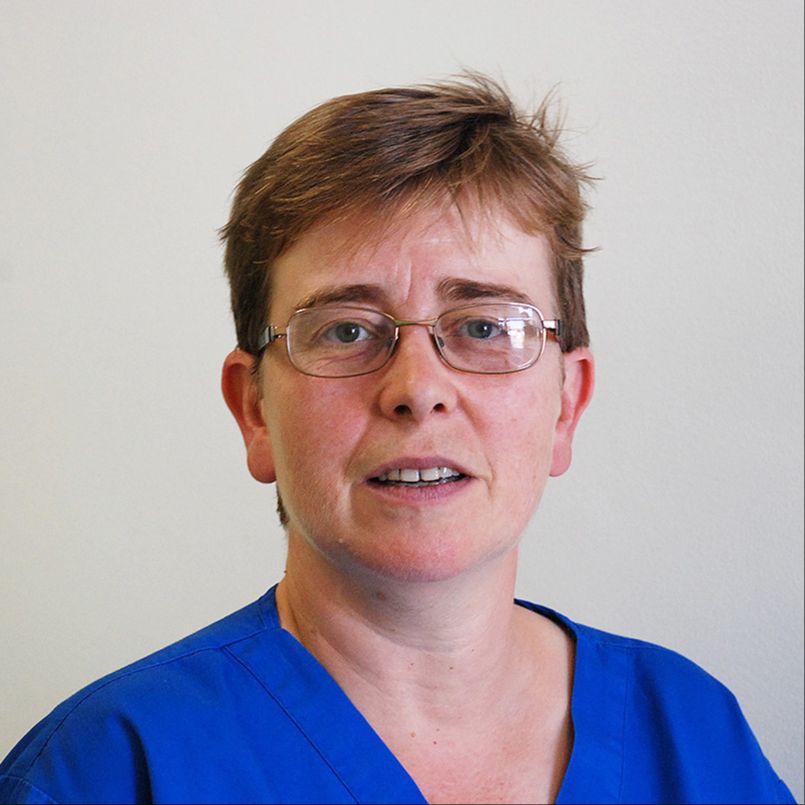
Marie-Christine Cadiergues
DVM, PhD, Dip ECVD
DVM (Toulouse, France 1991), PhD (2000), ECVD diplomate (2008), professor of Dermatology at the National Veterinary School of Toulouse (ENVT), Marie-Christine CADIERGUES is head of the Dermatology Unit and in charge of the development and coordination of clinical research in Companion Animals.
Her research fields are atopic dermatitis, otitis and ectoparasites. She is affiliated to the Toulouse Institute of Infectious and Inflammatory Diseases - INFINITy, a research unit of INSERM, CNRS, Toulouse III, in team 2 "Epidermal barrier and keratinocyte differentiation: from normal skin to inflammatory skin diseases". Within this team, canine atopic dermatitis is detailled at the molecular level, as canine disease can be a good model for human disease (the two diseases share many clinical features, and in particular appear spontaneously).
Canine skin models are developed to confirm pathophysiological hypotheses and test new therapies for both veterinary and human medicine.
(FRA) Management of Otitis Externa
Learning Objectives:
- Understand the pathophysiology of ear infections
-
Know how to perform a macroscopic and microscopic assessment of lesions
-
Know how to choose products based on the stage of the ear infection
-
Know how to implement proactive treatment to limit recurrence
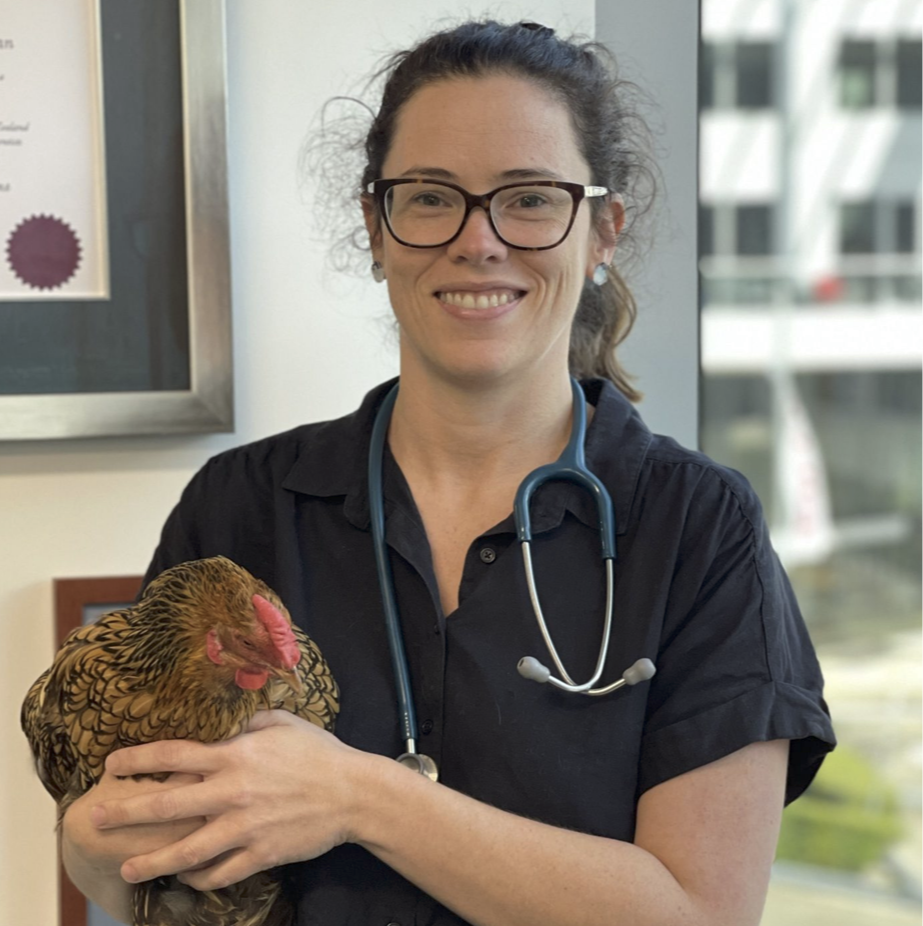
Melinda Cowan
BVSc (Hons I) FANZCVS(Avian Medicine) MANZCVS(Unusual Pets)
Dr Melinda Cowan graduated from the University of Sydney in 2007 with first class honours. After initially working in a busy dog and cat clinic, she took a position at a specialised bird and exotic pet practice in Brisbane. It was here that she undertook a residency in Avian Medicine, completing final examinations in 2016 to become a bird specialist and Fellow of the Australian and New Zealand College of Veterinary Scientists. Currently, Melinda is the only clinical veterinarian in NSW who holds a specialist qualification specifically in avian species.
Melinda has additional interests in the medicine and surgery of a wide range of other animals, including reptiles, amphibians, rabbits, ferrets, guinea pigs, rats, mice and fish. She has also worked for the RSPCA QLD Wildlife Hospital, treating a variety of native animals in addition to the domestic birds admitted to the shelter.
Mel has pet pigeons and a cockatiel as pets. She enjoys anything that involves being outdoors – swimming, running, cycling, touch football and hiking.
Feather Loss in Birds
Learning objectives: coming soon

Millie Rosales
DVM, DACVD
Dr. Millie Rosales earned her Bachelor’s degree in Biology from Florida International University before going on to receive her Doctor of Veterinary Medicine degree from the University of Florida, College of Veterinary Medicine, in 2000. After graduating, she worked as a general practitioner at a non-profit small animal clinic in Miami. In 2003, Dr. Rosales returned to the University of Florida to complete a two-year residency in veterinary dermatology, later becoming a Diplomate of the American College of Veterinary Dermatology (ACVD).
Dr. Rosales has held leadership positions in local professional organizations, including serving as the past president of the South Florida Veterinary Medical Association (SFVMA) and currently being a member of its executive board. She also served as a board member of the Miami Veterinary Foundation from 2008 to 2014.
Outside of her dermatology practice, Dr. Rosales is deeply passionate about supporting shelter and rescue animals. She actively advocates for local shelter and rescue organizations, promotes spaying/neutering, and emphasizes the importance of pet adoption. A native of Miami, Dr. Rosales is fluent in both English and Spanish, allowing her to serve the diverse community of South Florida.
Ear It Is! A Quiz-Based Journey Through Pinna Disorders in Dogs and Cats
Learning objectives:
- Identify the most common pinnal disorders in dogs and cats and their characteristic clinical signs.#
- Apply appropriate diagnostic tools for pinnal disease workups.
- Select appropriate treatment strategies for managing pinnal disorders.
- Improve client education and long-term management plans for recurrent or complex ear flap diseases.

Neelam Singh Josan
BVSc
Dr Neelam Singh Josan graduated from Madras Veterinary College, Tanuvas in 1997.
She is the Director of Josan Petcare Clinic, a family owned practice at Gurgaon, India. She owns and co-manages the practice with her spouse, a veterinarian, providing latest in Internal medicine, surgery and diagnostics to its patients. Her area of Specialization is Small Animal Internal Medicine with special interest in Veterinary Dermatology and with a focus on canine atopic dermatitis . She is a certified veterinarian in small animal care with vast experience in companion animal medicine since last 28 years.
Her professional experience includes training in Veterinary Dermatology under mentorship of Dr. B. Nagarajan, Professor (Retd) MVC, Chennai at his clinical practice in Chennai, covering dermatological diagnosis and management. She acquired her Certificate of knowledge and skills in Dermatology after clearing the examination for the course conducted by the International E Learning Veterinary School . Dr Neelam received canine dermatology training in NVF Dermatology modules, under Dr K G Umesh and Global Veterinary Dermatology Education Group (GVDEG) under Dr Sheila Torres. Professor Emeritus, Department of Veterinary Clinical Sciences, University of Minnesota, USA.
Dr Neelam was conferred the NVF Award for Professional Excellence in 2023. Dr. Neelam is the proud recipient of the World Association for Veterinary Dermatology WCVD 10 Scholarship for the World Congress at Boston. She is the first Indian and first Asian to be conferred the prestigious Peter Ihrke Scholarship by World Association for Veterinary Dermatology WAVD. She has delivered several lectures on small animal dermatology for practising veterinarians and Veterinary students in India. She is an Executive member of Association for Veterinary Dermatology, India. She is on Advisory Board for NVF Veterinary.
Topical Therapy Panel Discussion
Learning objectives: coming soon

Peter Hill
BVSc (Hons) PhD DVD DipACVD DipECVD MANZCVS
Dr Peter Hill completed his veterinary degree at the University of Liverpool in 1986. He spent 5 years in general practice before completing his residency in veterinary dermatology at the University of Madison-Wisconsin, USA. Returning to the UK, Peter completed a PhD at the University of Edinburgh before becoming a lecturer in Veterinary Dermatology and Veterinary Hospital Director. After 11 years in Edinburgh, he moved to the University of Bristol to become a Senior Lecturer in Veterinary Dermatology.
Dr Peter moved to Australia in 2009 with his family to practice as a Specialist Dermatologist at a Sydney based referral hospital. In 2010, he took up a position at the University of Adelaide where he remained for 11 years, finishing as a Professor in Veterinary Dermatology & Immunology and Head of Department of Companion Animal Health.
Dr Peter joined SASH Adelaide in 2022 and is currently the only veterinary dermatologist in the world to hold a PhD and be board certified in the USA, UK, and Europe. He has published over 100 journal articles and book chapters and has won numerous teaching awards.
Peter specialises in all aspects of dermatology and has particular expertise in allergies and ear infections. His home life revolves around spending time with his wife and two children, and their much loved pets.
Pododermatitis
Learning objectives: coming soon

Petra Bizikova
MVDr., PhD, dipACVD, dipECVD
Dr. Petra Bizikova graduated at the University of Veterinary Medicine in Kosice [Koshice], Slovakia in 2001. A fortunate trip to North Carolina State University gave her the chance to start an internship followed by a residency in veterinary dermatology and, subsequently, an immunology PhD. During her PhD studies, she discovered the major canine pemphigus foliaceus antigen and developed serological assay to assist with the diagnosis of this disease. She became boarded by both American and European Colleges of Veterinary Dermatology in 2010 and defended her PhD in 2012. She then joined the Dermatology Faculty of the College of Veterinary Medicine in 2012 as a clinician-scientist with a main interest in autoimmunity and atopic dermatitis. She is also managing the equine dermatology service at the North Carolina State University.
From Crusts to Cure: Diagnosis and Treatment of Feline Pemphigus Foliaceus
Learning Objectives:
- Recognition of pustular origin in cats with crusts and erosions
- Main differential diagnoses of feline pemphigus foliaceus
- Diagnostic approach to confirm feline pemphigus foliaceus
- From pathomechanism to treatment
- What to suspect when treated a cat with pemphigus foliaceus

Ralf Mueller
Dr.med.vet., Dr.habil., MANZCVSc, DipACVD, FANZCVSc, DipECVD
Prof. Ralf S. Mueller graduated in Munich, Germany, completed his doctoral thesis in 1987, and worked in several large and small animal practices before completing a residency in veterinary dermatology at the University of California/Davis in 1992. In 1992 he moved to Melbourne, Australia to work with his partner and wife Dr. Sonya Bettenay. Together, they created the first, purpose-built specialist practice in Australia. During that time, Dr. Mueller was concurrently consulting and teaching at the Veterinary Teaching Hospital/University of Sydney. Ralf and Sonya established (and continue to conduct) the Distance Education Program in Veterinary Dermatology of the Centre for Veterinary Education of the University of Sydney. In 1999, Ralf became Assistant Professor in Veterinary Dermatology at the College of Veterinary Medicine and Biomedical Sciences/Colorado State University. In 2004, he accepted a position as chief of the veterinary dermatology service at the University of Munich/Germany. His main research interests are allergies and ectoparasites. He has published over 250 studies, articles, book chapters and books and given more than fifteen hundred seminars, lectures and talks all over the world.
Culicoides hypersensitivity - What’s New?
Learning Objectives:
- Describe the immunopathogenesis of equine Culicoides hypersensitivity, including the roles of IgE, Th2 skewing, and eosinophils.
-
Recognize the key clinical manifestations and distribution of lesions in affected horses.
-
Summarize conventional management strategies and their limitations.
-
Explain novel therapeutic approaches, including anti-IL-5 vaccination and recombinant Culicoides allergen immunotherapy.

Ramón Almela
DVM, PhD, DECVD
Dr. Ramón M. Almela, is an Assistant Professor at Cummings School of Veterinary Medicine Tufts University, where he treats skin conditions in dogs, cats, horses, farm animals, and exotic species. He is originally from Murcia, a sunny friendly town bathed by the Mediterranean Sea in southeast Spain. As a child, he thoroughly enjoyed observing and interacting with all kinds of animals and it became clear that in the future he would become a doctor who would help animals. One story he enjoys telling is that in his childhood while dreaming of helping big cats in the African savanna, he used to perform CPR on the flies that his mother was trying to kill around the house.
After graduating and obtaining his PhD from veterinary school at the University of Murcia (Spain), he worked for several years in private practice before coming back to the University of Murcia where he became involved in the Dermatology service and ‘fell in love at first sight’ with veterinary dermatology.
In order to perform high-quality medicine, he pursued a residency program. He moved to Augsburg (Germany) for a residency in the European College of Veterinary Dermatology (ECVD) where he quickly had to learn a new language. After completing the residency program, he obtained board certification by the European College of Veterinary Dermatology. He has spent several externships at different European universities and at North Carolina State University and has lectured in different countries across Europe. He has authored two books, several peer-reviewed original publications, and has made many contributions in national and international scientific meetings. He can speak, write and read fluently Spanish, English, German and basic French. He enjoys his free time with his wife, toddler, their 14-year-old Labrador Retriever, and friends. He pursues many outdoor activities including when possible scuba-diving. Expectations include improving worldwide collaboration and networking between veterinary dermatologists.
(ESP) Clinical Approach to the Pruritic Dog
Learning Objectives:
- To understand the itch pathway and associated mediators in the dog
- To be able to assess the itch and itch severity in the dog
- To know the approach to the most common itchy diseases in the dog
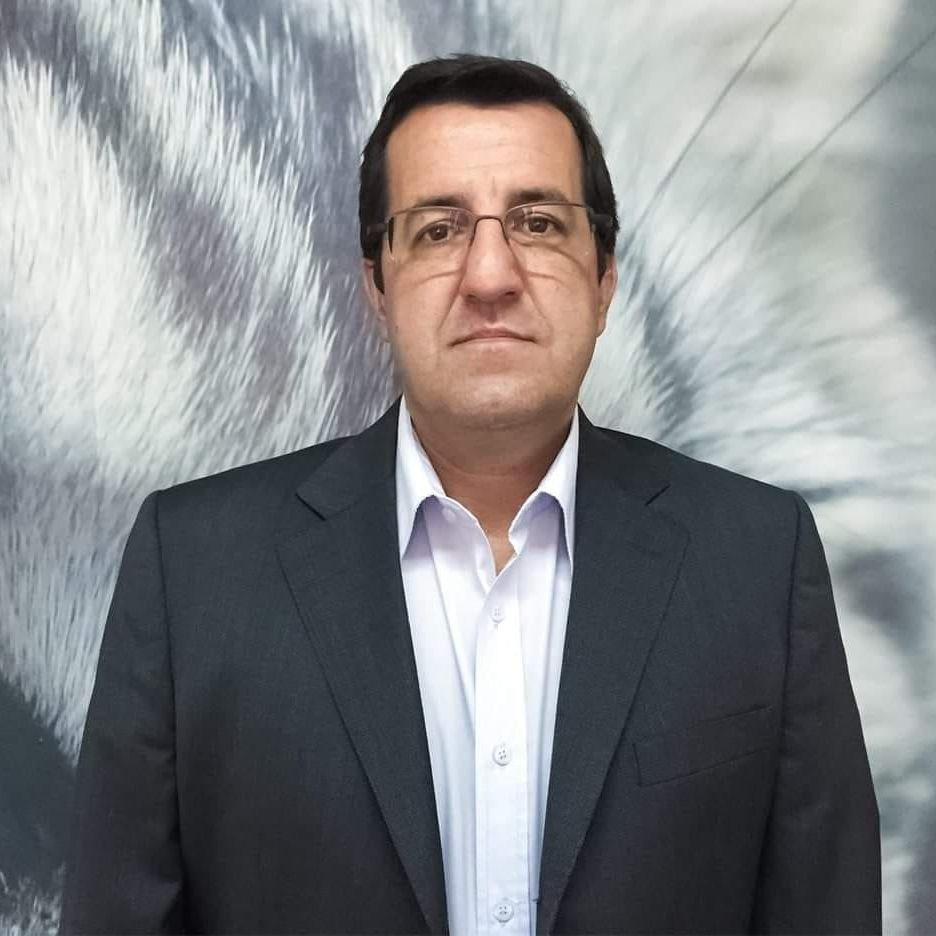
Ronaldo Lucas
DVM, MSc, PhD
Dr. Ronaldo Lucas graduated in Veterinary Medicine and Animal Science from the University of São Paulo (1991), obtained a Master’s degree in Veterinary Clinic from the University of São Paulo (1999), and a PhD in Veterinary Clinic from the University of São Paulo (2004). Former professor at six universities in São Paulo. Coordinator of the Veterinary Dermatology specialisation course at Equalis Sudeste and Nordeste. Technical director of Dermatoclinica, a clinic specialising in dermatology cases. He has experience in Veterinary Dermatology, working mainly in the following areas: dermatological therapeutics, cryosurgery, allergology, and otology. Former president of the Brazilian Society of Veterinary Dermatology and board member of the Latin American Society of Veterinary Dermatology. Consultant for Virbac Brazil.
(POR) Cholesteatoma (tympanokeratoma) in Dogs
Learning objectives: coming soon
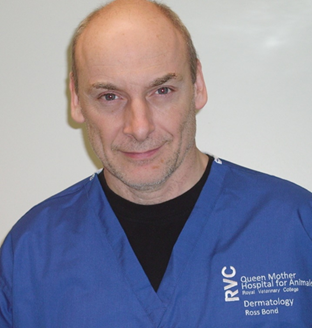
Ross Bond
BVMS PhD DVD DipECVD FHEA MRCVS
Ross Bond graduated from Glasgow Veterinary School in 1985, spent 5 years in farm and small animal practice, and then joined the Royal Veterinary College in 1990, where he is currently Professor of Veterinary Dermatology. His research work into Malassezia yeast infections in dogs led to an award of a PhD in 1996. Ross holds RCVS and European College Diplomas in Veterinary Dermatology and is recognised as a specialist in veterinary dermatology by the RCVS. His research interests relate primarily to microbial skin infections in dogs and cats.
Malassezia Dermatitis in Dogs & Cats
Learning objectives:
- A basic knowledge of the biology of the genus Malassezia.
- Understanding of the processes that favour transition from commensal to pathogen
- Recognise and diagnose the disease.
Awareness of treatment options and methods for prevention.

Stephen White
DVM, DACVD
Dr. Stephen D. White became a Diplomate of the American College of Veterinary Dermatology (ACVD) in 1983. A graduate of the School of Veterinary Medicine at the University of California at Davis, he did his internship and dermatology residency at Davis as well. He has held faculty positions at Tufts University School of Veterinary Medicine and Colorado State University College of Veterinary Medicine and Biomedical Sciences, before joining the School of Veterinary Medicine at University of California at Davis as a full Professor in 1998.
Dr. White has thrice been a sabbatical professor at the National School of Veterinary Medicine in Nantes, France, and has served as president of the ACVD, three times as Secretary of the World Congress of Veterinary Dermatology, and is currently the Secretary of the World Association for Veterinary Dermatology.
Dr. White has published over 130 scientific papers in refereed journals, numerous book chapters, and has lectured throughout North America, Europe and Asia. His interests are dermatologic manifestation of internal disease, food allergy, and dermatology of equine, farm and exotic animals.
Dr. White received the ACVD’s Award of Excellence in 2000, the American Academy of Veterinary Dermatology’s Frank Kral Award in 2020, the American Veterinary Medical Association Clinical Research Award in 2022 and has been accorded the UC Davis honorific title ‘Distinguished Professor’.
Dermatophilosis in Large Animals
Learning Objectives:
-
Learn the three predisposing conditions that must be present for dermatophilosis to occur.
-
Be familiar with the clinical presentation, both the type of lesions as well as their distribution on the animal.
-
Understand the options for treatment and possibilities for prevention.

Sue Paterson
MA VetMB DVD. Dip.ECVD FRCVS
Sue Paterson is an RCVS and European Specialist in Veterinary Dermatology. She has been elected as a Fellow of the RCVS for contributions to clinical practice in the field of Veterinary Dermatology. Sue has written 7 text books, numerous book chapters and has more than 80 refereed dermatology publications. She has lectured at international meetings in more than 30 countries. She is a member of RCVS Council, and SVP of ESVD. She is past President of RCVS, ESVD and BSAVA. In her spare time, she and her husband Richard (and her two Labradors Thornton and Saffron) are keen walkers.
Small Animal Interactive Quiz
Learning objectives: coming soon

Thierry Olivry
DrVet, PhD, Diplomate Emeritus ECVD, ACVD
Prof. Thierry Olivry graduated from the University of Toulouse, France, and completed a dermatology residency and PhD in comparative pathology at the University of California Davis. He is an emeritus diplomate of both ECVD and ACVD. After 28 years as a clinician-scientist in veterinary dermatology, allergy, and immunology at the North Carolina State University College of Veterinary Medicine, Dr. Olivry left Academia and returned to Europe. In November 2022, he became Head of Research & Development at Nextmune, a multinational animal health company headquartered in Stockholm, Sweden.
Multimodal approach to canine atopic dermatitis
Learning Objectives:
- Understand the complexity of the inflammation in the skin of dogs with AD
- Rank anti-allergic drugs based on their breadth of inflammation suppression
- Design a treatment protocol based on the clinical signs of the patient

Tim Nuttall
BSc BVSc CertVD PhD CBiol MSB MRCVS
Dr Tim Nuttall graduated from the University of Bristol in 1992 and originally joined the Dick Vet in 1995 to train in dermatology and study for a PhD on canine atopic dermatitis. He joined the University of Liverpool in 2001, developing a dermatology clinic that now sees over 1000 cases each year. In August 2013 he returned to the Dick Vet as Head of Dermatology. The clinic sees a wide range of skin problems in dogs, cats, exotic species, horses and farm animals. Facilities and expertise include CO2 and Ho:YAG lasers, video-otoscopy, allergy testing and allergen specific immunotherapy, and managing antimicrobial resistant infections.
Tim has written over 100 clinical and scientific publications, co-authored A Colour Handbook of Skin Diseases of the Dog and Cat, and presented over 150 lectures throughout the world. In addition, Tim has served on RCVS, BSAVA, ESVD and DEFRA scientific committees, the International Committee on Atopic Diseases in Animals, is a scientific advisor to the Bella Moss Foundation and is on the editorial board of Veterinary Dermatology. He has served on the Controlling Antimicrobial Resistance in Scotland (CARS) Steering Group and is a member of the Scottish Veterinary Antimicrobial Prescribing Group and Scottish Veterinary Antimicrobial Resistance Group. He also had an active research programme, studying antimicrobial resistance, skin infections and the genetics of canine atopic dermatitis. In 2014 he received the BSAVA Woodrow Award for outstanding contributions to veterinary medicine.
Topical Therapy Panel Discussion
Learning objectives: coming soon

Valerie Fadok
BVetMed (Hons), MRCVS
Dr. Valerie Fadok received her DVM from Washington State University in 1978, after which she did an internship in small animal medicine and surgery at the West Los Angeles Veterinary Medical Group. A residency in veterinary dermatology followed at the University of Florida College of Veterinary Medicine, and Dr. Fadok became board-certified in 1982. She earned a PhD in Experimental Pathology at the Unversity of Colorado Health Sciences center in 1991.
Dr. Fadok has worked on faculty at University of Tennessee, the University of Florida, Texas A & M University, and National Jewish Health. She has worked in private specialty practices in Denver, Colorado, and Houston, Texas. Dr. Fadok joined Zoetis in 2014 as a field specialist to help veterinarians treat skin diseases with more joy and less frustration. She retired from that position in January 2023, and now consults to Nextmune and Zoetis Diagnostics, as well as participating in the dermatology folder at the Veterinary Information Network (VIN). Dr. Fadok has lectured internationally, nationally, and locally on subjects relating to veterinary skin disease, immunology, and inflammation. Awards include the ACVD Award for Excellence (2010) and the Frank Kral Award (2018).
Use of monoclonal antibodies in veterinary dermatology
Learning objectives: coming soon
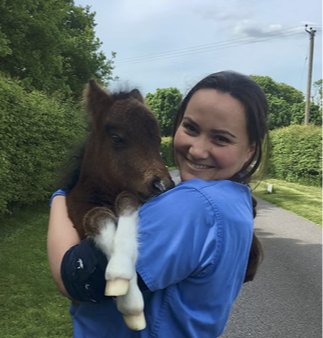
Victoria South
VetMB BA CertAVP(EM) DipECEIM MSc MRCVS
Victoria South graduated from Cambridge University in 2006, and worked as an ambulatory equine vet for several years before becoming a resident in Equine Internal Medicine, in March 2009. She became a European and RCVS recognised specialist in Equine Internal Medicine in 2013, and was part of the medicine referral team at Liphook Equine Hospital for more than a decade. More recently, she works as a consultant, and is a part-time lecturer and clinical lead at the University of Cambridge School of Veterinary Medicine. She is working towards an MSc in Evidence Based Healthcare at the University of Oxford. Victoria also works for the FEI (eventing and endurance) and is a Level 1 OV and PTV. Victoria is passionate about the dissemination of evidence into practice, and promoting innovation in practice. Her specific areas of interest include endocrinopathies, antimicrobial stewardship, ophthalmology, diagnostic imaging, and clinical pathology.
AMR & One Health Panel Discussion
Learning objectives: coming soon

The WAVD is a non-profit organisation that unites veterinary dermatology groups from across the globe. Its mission is to advance veterinary dermatology worldwide by promoting education, collaboration, and the exchange of scientific knowledge. WAVD supports international congresses, scholarships, and initiatives that make specialist expertise accessible to all veterinary professionals.

Elearning.Vet is a leading provider of online veterinary CPD, dedicated to delivering high-quality, accessible, and clinically relevant education. With a focus on innovation, the platform brings expert-led webinars, panel discussions, and resources directly to the global veterinary community, helping practitioners keep pace with advances in practice while connecting with peers worldwide.

FREE REGISTRATION
Enter your details below to be registered for the live event on Tuesday 3rd February 2026






